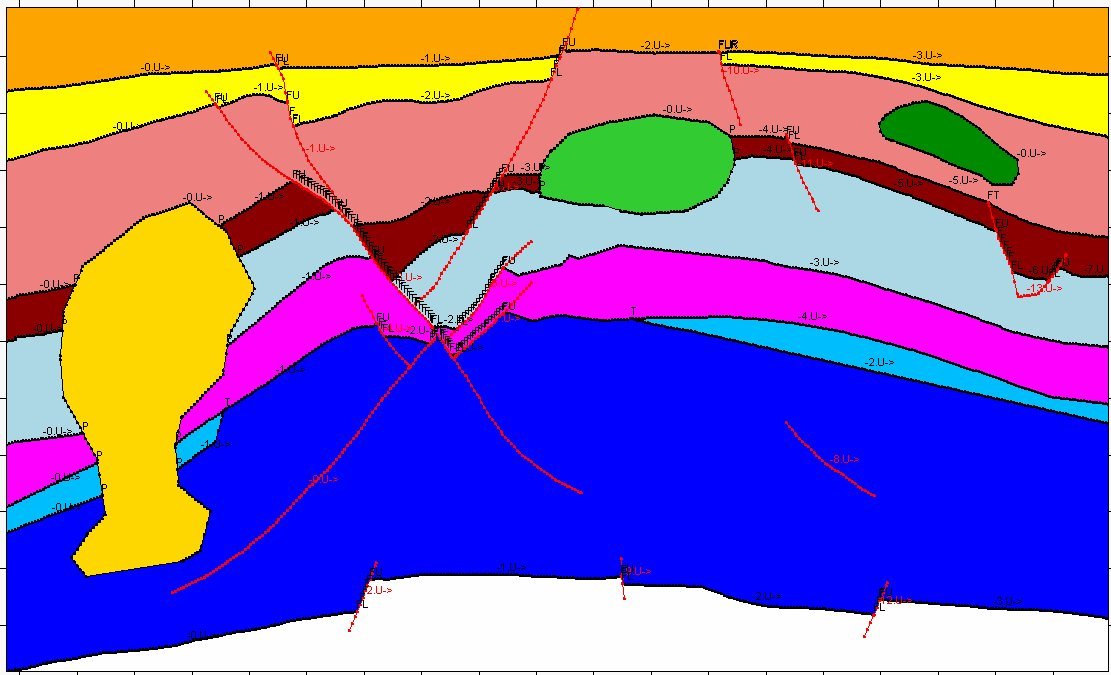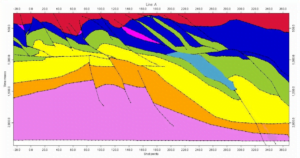Sometimes a complex geological structure – such as multi-Z interpretation data, for example; reverse faulting, salt intrusions, pods and channels, etc. cannot be easily represented by grids. In these cases, you can use Profile Mode depth conversion to work with this data. Before you can, however, you must perform the process of Profile Snapping.
Data output from workstations basically consists of segment-orientated data, i.e. a collection of digitized sequential data points measured by SP/CDP and TWT (Two-Way Time). These points are collected into a segment until there is a break in the data, which is usually caused by a fault. Your mind can usually recognise that a series of such segments represents a layer. The challenge is to direct the program recognise the series of segments as a layer. Snapping is the semi-automatic process that attempts to connect and integrate these discrete segment orientated data into a meaningful geological layer.
How Velit handles Pods
Velit’s definition of a Pod is a lens-like layer of rock that is discontinuous which does not onlap or pinchout; it will exist as an isolated layer within another layer.
Pods can be depth converted successfully within Velit. Up to 32 pods can be accommodated within a profile and each pod can have its own or a common velocity method.
In normal usage, Velit presumes and expects layers to be continuous over the whole profile. If a layer has disappeared it is because it has been truncated by a younger event horizon or pierced by an older event horizon; the snapping logic will then continue the tracking of the layer that has disappeared along this new event horizon until the end of the profile. With Pods this is not the case and so a special case can be made to inform the Velit snapping logic to treat the pods as single, discontinuous instances.



